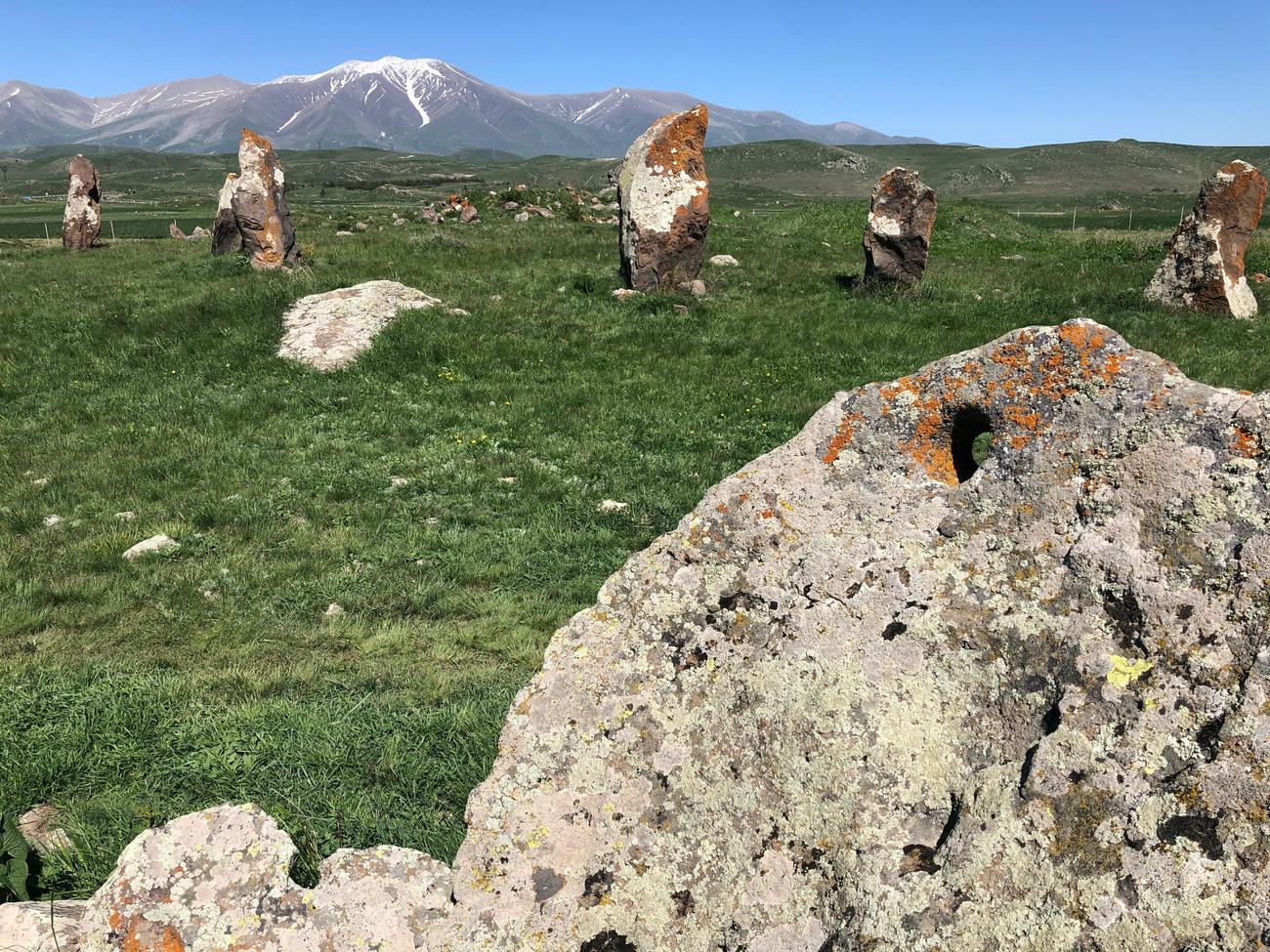Are you ready to embark on a mouthwatering journey into the world of Armenian cuisine? Brace yourself for a tantalizing exploration of facts about Armenian food that will undoubtedly leave you craving for more. From ancient traditions passed down through generations to the vibrant concoction of flavors that tickle your taste buds, Armenian cuisine is a treasure trove waiting to be discovered. Join me as we peel back the layers of culinary history, unravel fascinating anecdotes, and savor the delectable dishes that make Armenian food a true delight. Get ready to tantalize your senses and delve into the fascinating world of Armenian cuisine!

Facts About Armenian Food
Armenian cuisine is a treasure trove of flavors and culinary traditions that have been passed down through generations. From the aromatic herbs to the mouthwatering dolma, there’s something truly special about the food from this beautiful country. Let’s delve into some fascinating facts about Armenian food and discover the secrets behind its deliciousness.
Distinct Flavor Combinations: A Symphony of Ingredients
Armenian cuisine is renowned for its distinct flavor profiles, which are a result of carefully chosen ingredients and traditional cooking techniques. The use of lamb, eggplant, and bread (lavash) are fundamental features of Armenian dishes. The flavors of Armenian food rely on the quality and freshness of the ingredients, rather than excessive use of spices. This emphasis on the natural taste of ingredients creates a harmonious blend that is both satisfying and delectable.
Cracked Wheat Love: A Staple of Armenian Food
While many cuisines rely on maize or rice, Armenians have a deep affinity for cracked wheat, known as bulgur. This versatile grain adds a nutty flavor and delightful texture to various dishes. Bulgur is often used in pilafs, salads, and stews, showcasing the importance of this ingredient in Armenian cuisine. Its presence reflects not only the taste preferences of Armenians but also their deep connection to their land and its traditional crops.
Herbs Galore: The Aroma of Freshness
Fresh herbs play a significant role in Armenian cooking, both as ingredients and accompaniments. From parsley and mint to tarragon and cilantro, herbs are used abundantly to elevate the flavors of dishes. These fragrant additions bring a burst of freshness and a touch of vibrancy to every bite. Whether in savory dishes, salads, or even sauces, the use of herbs is a key aspect of Armenian cuisine, adding depth and complexity to the flavors.
Cultural Melting Pot: Influences from Diverse Traditions
Armenian cuisine is a beautiful amalgamation of Mediterranean, Middle Eastern, and Slavic influences. The country’s history and geography have played a significant role in shaping its gastronomy. These cultural influences are evident in the use of ingredients, cooking techniques, and the variety of flavors in Armenian dishes. The rich tapestry of culinary traditions makes Armenian cuisine truly unique and fascinating.
Mouthwatering Delicacies: Stars of Armenian Cuisine
Armenian cuisine boasts a multitude of delectable dishes that are sure to tantalize your taste buds. Let’s explore a few standout delicacies:
Dolma: This traditional Armenian dish consists of stuffed grape leaves or vegetables, usually with a delicious mixture of rice and herbs. Each bite of this savory treat unveils layers of flavors and a satisfying combination of textures.
Manti: These dumplings are a true delight. Filled with spiced meat and served with yogurt and garlic sauce, manti offers a burst of flavors, reminiscent of the Middle Eastern culinary tradition.
Lavash: A staple of Armenian cuisine, lavash is a thin and fluffy flatbread that serves as a versatile base for many dishes. It’s perfect for wrapping kebabs, scooping up dips, or simply enjoying on its own.
Khorovats: Armenian barbecue at its finest, khorovats features succulent grilled meat, usually marinated in a flavorful blend of spices. The aroma of sizzling meat and the smoky flavors make this dish a true crowd-pleaser.
Armenian Cuisine: A Reflection of Tradition and Heritage
Armenian cuisine is deeply rooted in the country’s history, geography, and the crops and animals abundant in Armenian-populated areas. This connection to the land and its produce is what makes Armenian food so special. From the traditional grains and aromatic herbs to the heartwarming stuffed dishes, Armenian cuisine offers a captivating insight into a rich cultural heritage.
As we delve deeper into the fascinating world of Armenian cuisine, we unlock not only the secrets of delicious flavors but also the stories of generations before us. The dishes passed down through time carry the essence of traditions and the love poured into each recipe. So, let’s celebrate Armenian cuisine and its mouthwatering treasures together!
“Armenian cuisine tells a story of history, tradition, and the vibrant flavors that have stood the test of time. Let the warmth of the bread, the aroma of herbs, and the subtle spices transport you to the heart of this culinary journey.”
Armenia, a small yet captivating country nestled in the heart of the Caucasus region, is a treasure trove of fascinating facts. From its rich cultural heritage to its breathtaking landscapes, there is so much to discover about this hidden gem. If you’re curious to learn more about Armenia and all it has to offer, click here to uncover some intriguing facts about Armenia: facts about armenia. Prepare to be amazed as you delve into the captivating history, vibrant traditions, and awe-inspiring natural wonders that make this country truly one-of-a-kind. So, what are you waiting for? Embark on a virtual journey and let Armenia astonish you at every turn.
Facts about Armenian Food
Armenian cuisine is a treasure trove of flavors and traditions. If you are curious about Armenian cuisine facts, then you are in for a treat! Did you know that Armenian dishes have a rich history dating back thousands of years? From aromatic spices to unique cooking techniques, Armenian cuisine offers a delightful experience for your taste buds. Discover interesting facts about Armenian dishes that will leave you craving for more!
One fascinating fact about Armenian cuisine is the use of fresh and locally sourced ingredients. Traditional Armenian dishes often incorporate seasonal produce, ensuring that every bite is bursting with flavors. From juicy tomatoes to crisp cucumbers, these ingredients add a refreshing twist to Armenian dishes.
Another intriguing aspect of Armenian cuisine is the influence of neighboring countries. As a crossroads between Europe and Asia, Armenia has assimilated culinary techniques and flavors from different cultures. The result? A beautiful fusion of flavors that are uniquely Armenian.
Armenian cuisine also boasts a variety of mouthwatering dishes that are bound to please any palate. From savory meat dishes like khorovats (Armenian barbecue) to indulgent sweets like baklava, there is something for everyone to enjoy. Each bite is a symphony of flavors that will transport you to the vibrant streets of Armenia.
Ready to uncover more interesting facts about Armenian dishes? Click here to explore the fascinating world of Armenian cuisine facts. You won’t be able to resist trying these delectable dishes for yourself!
Hungry for more intriguing tidbits about Armenian food? Look no further! Armenian dishes are steeped in history and culture, making them truly special. Every plate tells a story, and you won’t want to miss out on these captivating tales. From the origin of popular dishes to the customs and traditions surrounding mealtime, there is so much to discover.
One interesting fact about Armenian food is the concept of “Vospov Khachapuri.” This mouthwatering dish features a delicious combination of lentils, onions, garlic, and spices, all wrapped in a golden, flaky pastry. It serves as a wonderful example of Armenian culinary creativity and will surely leave you wanting more.
Another fascinating aspect of Armenian cuisine is the cherished ritual of hosting feasts, known as “Kez.” These gatherings bring families and friends together, offering not only an abundance of delicious food but also a sense of community and celebration. From extravagant wedding feasts to intimate family gatherings, the Armenian dining experience is truly a feast for the senses.
Discover even more captivating facts about Armenian dishes by clicking here. You’ll be amazed by the rich history and flavors that make Armenian cuisine so irresistible.
Interesting facts about Armenian dishes
Hungry for knowledge and cravings? Explore the captivating world of Armenian cuisine facts and interesting facts about Armenian dishes. Click on the links above to delve into the delectable flavors, traditions, and stories that make Armenian food an absolute delight. Whether you’re an adventurous foodie or simply curious about different cultures, Armenian cuisine is sure to satisfy your appetite for discovery. So, embark on this culinary journey and indulge in the wonders of Armenian food!
Armenia: Discovering the Crossroads of Europe and Asia
[youtube v=”IQdwlHtgn1c”]
Armenia, nestled in the heart of the South Caucasus, is a country that possesses a rich history, vibrant culture, and breathtaking landscapes. In this article, we will explore 58 astonishing facts about Armenia that are sure to leave you in awe.
Situated at the crossroads of Europe and Asia, Armenia shares borders with Turkey, Georgia, Azerbaijan, and Iran. Its strategic location has played a significant role in shaping its history and culture (1).
Delishan National Park, located 100 kilometers northeast of Yerevan, is known as the greenest place in Armenia. The park is characterized by peaceful rolling hills, mountain ranges, and endless forests, while also hosting cultural landmarks such as Goshavank Monastery and Haghartsin Monastery (2).
Armenia stands among the six ancient countries, including Iran, China, Greece, Egypt, and Japan, that have survived for thousands of years. Its existence has been recorded in ancient inscriptions and texts, such as King Darius’s Behistun inscription in 520 BC and the works of ancient Greek authors Herodotus and Xenophon in the 5th century BC (3).
Lake Sevan, situated in eastern Armenia at an altitude of 1900 meters, is one of the highest freshwater lakes globally. Known for its unique sandy and pebble beaches framed by dense woods, Lake Sevan adds an untouched wilderness to the country’s scenic beauty (4).
Did you know that Armenia has its own alphabet? Created in 405 AD by Mesrop Mashtots, the Armenian script consists of 38 letters, with 31 consonants and seven vowels (5). The creation of this alphabet was significant as it enabled the translation of the Bible into the local language, following Armenia’s adoption of Christianity as the national religion (6).
Mount Ararat holds great significance in Armenian culture. Though it is not part of Armenia anymore, as it was allotted to Turkey in a peace treaty in 1923, it is still revered by local Armenians. Some even believe that Armenia’s protection from strong earthquakes is due to the mountain’s presence (7).
Armenia is known for its unique attractions, including a village called Paris that boasts its own Eiffel Tower, albeit a smaller version (8). The country also houses the world’s oldest winery, dating back more than 6,000 years. Armenia’s wines, made from indigenous grapes and even fruits like apricots and pomegranates, offer a unique taste for visitors to try (9).
Armenian brandy, also known as Armenian cognac, has gained immense popularity. Founded in 1887 by Nerses Tairian, a renowned Armenian trader, the Armenian Brandy Factory in Yerevan became famous for its brandy. It is said that even Winston Churchill was a fan of Armenian brandy (10).
The Armenian language is known for its humorous expressions and sayings. For example, the phrase “glue article” translates to “iron the head,” referring to someone who talks nonsense. Another expression, “means let it snow on your brain,” is used to suggest that someone’s thoughts are unreasonable (11).
Lada, a car brand, is a common sight throughout Armenia, accounting for a significant portion of the country’s vehicles. It reflects the widespread popularity of this brand among Armenians (12).
Coaster of Forest State Reserve, dating back to the 4th century, is one of the oldest protected areas in the world. This reserve is home to various wildlife, including leopards, bears, and endemic plant species (13). Noravank Canyon, also known as the Amaghu Valley, is renowned for its stunning Noravank Monastery and its rugged red cliffs that create an unforgettable panorama (14).
Armenia boasts an incredible variety of bird species, including rock buntings, European goldfinches, bearded vultures, and Eurasian magpies (15). The town of Goris, located in southern Armenia, offers charming landscapes with lush green mountains and breathtaking rock formations. Nearby, the Tatev Monastery, situated on an 850-meter-high cliff, is accessible via the world’s longest cable car (16).
Armenians celebrate unique traditions and holidays, such as jumping over a bonfire for good luck on the last Saturday of February (17). The Symphony of Stones, a rock formation that resembles an organ, is a natural wonder formed by the sharp freezing of lava (18).
Armenia has its own currency, the dram, which cannot be purchased or sold outside of the country (19). One of the most traditional Armenian dishes is khash, a soup made from cow hooves. Historically considered “poor man’s food,” khash has a rich cultural significance (20).
Armenia is home to the Germuk Waterfall, also known as Mermaid’s Hair, located in the spa town of Yermuk. This exquisite waterfall adds to the natural beauty of the region renowned for its hot springs and health resorts (21).
Chess holds great importance in Armenian culture. It is part of the school curriculum, and Armenia has produced many chess champions, including Gabriel Sargissian, Tigran Petrosian, Levon Aronian, and many more (22).
Armenia has strong connections to celebrities such as the Kardashians, Andre Agassi, and Gary Kasparov, who are of Armenian descent. These individuals have made a significant impact in their respective fields (23).
Despite being a landlocked country, Armenia has a significant beach culture during the summer due to its popular lakes and rivers. The best beaches can be found on Lake Sevan, Lake Arpi, Lake Martuni, and the Dzrashen Beach (24).
In Armenian culture, newborns are traditionally not allowed to meet anyone outside of immediate family for the first 40 days of their lives. This belief is not unique to Armenian culture and can be found in various cultures around the world (25).
Armenia’s name is derived from Aram, the great-great-grandson of Noah from the Bible. Aram is considered the progenitor of all Armenians and a significant figure in Armenian tradition (26).
The capital city of Yerevan is known as the “Pink City” due to its picturesque buildings constructed from naturally colored volcanic rocks of varying shades of pink (27). Apricots hold great importance in Armenian culture, so much so that they are even depicted on the Armenian flag. The apricot tree also provides wood for one of the most famous Armenian musical instruments, the duduk (28).
Armenia celebrates the Golden Apricot International Film Festival annually in Yerevan, which not only focuses on apricots but also showcases international films (29). The Heris River Valley, located on Iran’s northern border, offers a hidden gem with castles, tombs, stepped villages, and breathtaking mountain scenery (30).
Armenian bread, known as lavash, has been recognized as intangible cultural heritage by UNESCO. Traditionally baked underground, lavash can be stored for up to a year. Its history dates back to early innovations in cooking thin flatbreads (31).
Armenian women were known for wearing extravagant headdresses that symbolized the wealth and status of their husbands. These headdresses were a prominent feature of Armenian culture (32). The first church in the world, Holy Etchmiadzin, was built in Armenia in the early 4th century. It serves as the headquarters of all Armenian churches and is a popular pilgrimage site (33).
Armenia carries a rich and unique heritage, illustrated by the Ughtasar petroglyph dating back to 12,000 BC and the world’s oldest known leather shoe dating back to 3500 BC, both discovered within Armenian territory (34).
As a result of its historical connection with Russia, the Russian language is prevalent in Armenia, especially among the older generation. Armenia was a part of the Soviet Union for nearly 70 years, contributing to the language’s popularity (35).
Lake Rop is an ideal destination for a quiet retreat, offering a relaxed atmosphere compared to the bustling Lake Sevan. It was transformed into a reservoir in 1951, enlarging its natural state (36).
Armenia shares a long-standing rivalry with neighboring Azerbaijan. When Shakira accidentally held Azerbaijan’s flag upside down during a concert, it caused quite a stir. Armenians found satisfaction in the incident, even though it was unintentional (37).
Zaghurdo is a renowned ski resort in Armenia, boasting around 27 kilometers of slopes served by six different lifts (38). The Tatav Ariel Tramway holds a Guinness World Record as the world’s largest non-stop cable car, spanning 18,871 feet and connecting the Tatev Monastery with the Vorotan River Gorge (39).
Armenia’s capital, Yerevan, operates a deep Soviet-style metro system. This metro is widely used by both locals and tourists visiting the country (40). Wearing a hat in cold weather is believed to prevent catching a cold in one’s teeth according to an old Armenian belief (41).
Armenia is often referred to as a “Sunny Country” due to its climate, which provides sunshine for the majority of the year (42). Cross stones, also known as khachkars, are a key symbol in Armenian culture. These intricately carved memorials bear crosses and hold great religious and historical significance (43).
The Trichqin Waterfall, the highest waterfall in Armenia, is situated on the border of Shirak and Lori regions. It drops from a height of 75 feet, offering a magnificent sight (44). Armenia has implemented compulsory military service, drafting Armenian men for two years once they turn 18 (45).
Armenian surnames often end with “Yan” or “Ian,” indicating “son of” in the Armenian language (46). Carpets hold cultural significance in Armenian families, historically used to cover floors and decorate living spaces. Armenian women meticulously wove carpets, and these family heirlooms were considered valuable (47).
Travelers from around the world, including Arab geographer al-Masudi and Marco Polo, praised Armenian rugs for their unique colors and quality, leading to their importation into Europe (48). The Geological Museum of Armenia houses a skeleton of the Trangotherium elephant, which dates back one million years and was discovered in the vicinity of Goyk (49).
Armenia has experienced significant emigration due to various factors, including the Armenian Genocide, political issues, and economic challenges. Approximately six million Armenians live abroad, with the second-largest Armenian community residing in Los Angeles (50). Armenians celebrate New Year twice, on January 1st and January 13th, according to the old Julian calendar (51).
Ivan Aivazovsky, a Russian painter of Armenian descent, left a significant artistic legacy with around 6,000 paintings, the majority of which were seascapes (52).
In conclusion, Armenia is a land of hidden wonders and unique traditions. From its breathtaking landscapes and historical sites to its rich cultural heritage and warm hospitality, Armenia captivates visitors with its charm. Journey into the heart of the South Caucasus and discover the treasures of Armenia for yourself.
FAQ
Question 1: What are some traditional ingredients used in Armenian cuisine?
Answer 1: Armenian cuisine is characterized by the use of lamb, eggplant, and bread (lavash) as basic features. Armenians traditionally prefer cracked wheat (bulgur) to maize and rice. Fresh herbs are also used extensively in both the dishes and as accompaniments.
Question 2: What are some influences on Armenian cuisine?
Answer 2: Armenian cuisine is influenced by Mediterranean, Middle Eastern, and Slavic cuisines. The flavors and cooking techniques are shaped by the country’s history and geography, creating a unique blend of flavors and culinary traditions.
Question 3: What are some popular Armenian dishes?
Answer 3: Some popular Armenian dishes include dolma (stuffed grape leaves), manti (dumplings), lavash (thin unleavened bread), khorovats (grilled meat), lule kebab (minced meat kebabs), ghapama (stuffed pumpkin), and topik (chickpea pate).
Question 4: How does Armenian cuisine reflect the traditional crops and animals in the region?
Answer 4: Armenian cuisine is a reflection of the traditional crops and animals grown and raised in Armenian-populated areas. The use of lamb, cracked wheat, and fresh herbs highlights the availability of these ingredients in the region, while the emphasis on quality and freshness showcases the importance of locally sourced produce.
Question 5: What is the culinary style of Armenian cuisine?
Answer 5: Armenian cuisine focuses on the quality and freshness of ingredients rather than excessive use of spices. The flavor of the food is enhanced through the skillful use of herbs and the cooking techniques utilized. The preparation of meat, fish, and vegetable dishes often involves stuffing, adding an element of complexity and richness to the overall culinary experience.
















